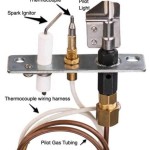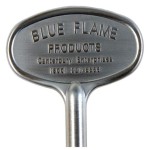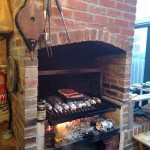Fireplace Insert Stoves: An In-Depth Guide
Fireplace insert stoves represent a significant upgrade for homeowners seeking improved efficiency, enhanced aesthetics, and reduced emissions compared to traditional open fireplaces. These appliances are designed to fit directly into an existing fireplace opening, transforming it from a potentially drafty and inefficient heat source into a powerful and controllable heating system. This article delves into the various aspects of fireplace insert stoves, encompassing their types, installation processes, advantages, and maintenance requirements.
Types of Fireplace Insert Stoves
Fireplace insert stoves are categorized primarily by the type of fuel they utilize. The most common types are wood-burning, gas-burning, and pellet-burning inserts. Each type offers distinct advantages and disadvantages, influencing factors such as heating capacity, fuel cost, maintenance demands, and environmental impact.
Wood-Burning Inserts: These inserts burn seasoned firewood as their primary fuel source. They are typically constructed of cast iron or steel and are designed to radiate heat efficiently. Modern wood-burning inserts often incorporate advanced combustion technologies, such as secondary air injection and catalytic converters, to reduce particulate emissions and improve overall efficiency. The heat output of wood-burning inserts is typically measured in British Thermal Units (BTUs) per hour, and models are available to heat various sizes of spaces. Wood-burning inserts offer a more traditional aesthetic and can be a cost-effective heating option if firewood is readily available at a reasonable price. However, they require manual refueling, create ash that needs to be removed, and necessitate a dedicated space for firewood storage.
Gas-Burning Inserts: Gas-burning inserts operate on natural gas or propane. They offer convenience and ease of use, as they can be ignited with the push of a button and often feature thermostatic controls to maintain a consistent temperature. Gas inserts typically have realistic-looking artificial logs and can be vented directly through the existing chimney or through a direct-vent system that exhausts directly through an exterior wall. Gas inserts generally require less maintenance than wood-burning inserts and produce significantly less particulate emissions. The cost of operating a gas insert depends on the prevailing price of natural gas or propane in a given area. While they offer advantages in terms of cleanliness and convenience, some homeowners may prefer the ambiance and heat characteristics of a wood-burning fire.
Pellet-Burning Inserts: Pellet-burning inserts burn compressed wood pellets, which offer a consistent fuel source with relatively low moisture content. Pellet inserts typically feature an automated feeding system that dispenses pellets into the firebox as needed, allowing for extended burn times without manual refueling. They produce less ash than wood-burning stoves and generally have lower emissions. Pellet fuel is often readily available and can be stored in bags or bulk containers. The heating output of pellet inserts is also measured in BTUs per hour, and models are available to suit different heating needs. While pellet inserts offer a convenient and relatively clean-burning option, they require electricity to operate the auger and fan systems. They may also be noisier than wood or gas inserts due to the mechanical components involved in the fuel feeding process.
Installation and Safety Considerations
The installation of a fireplace insert stove is a critical process that should be performed by a qualified professional. Improper installation can lead to safety hazards, such as carbon monoxide poisoning or chimney fires. Before installing any insert stove, it is essential to have the existing chimney inspected by a certified chimney sweep to ensure it is structurally sound and free from obstructions.
Chimney Liner Installation: A key aspect of installation involves the installation of a chimney liner that is sized appropriately for the specific insert stove. The liner serves to contain the combustion gases and direct them safely to the outside atmosphere. Different types of liners are available, including stainless steel liners for wood, gas, and pellet inserts. The liner must be properly insulated to prevent excessive heat transfer to combustible materials surrounding the chimney. The size and type of liner are typically specified by the insert stove manufacturer and should be strictly adhered to during the installation process.
Clearances to Combustible Materials: Maintaining proper clearances to combustible materials, such as walls, flooring, and furniture, is crucial for safe operation. The manufacturer's instructions will specify the minimum clearance distances required for each model. These clearances may vary depending on the type of insert stove and the construction of the surrounding walls. Heat shields may be required in some cases to further reduce the risk of fire. Accurate measurements and adherence to the specified clearances are essential to prevent overheating and potential fires.
Carbon Monoxide Detectors: The installation of carbon monoxide detectors is paramount for any home with a fuel-burning appliance. Carbon monoxide is a colorless, odorless gas that can be deadly if inhaled. Detectors should be installed in accordance with local building codes and the manufacturer's instructions. Regular testing of the detectors is necessary to ensure they are functioning properly. It’s advisable to have multiple detectors strategically placed throughout the house, particularly near bedrooms and living areas. Proper ventilation and regular inspection of the stove and chimney system are also critical to prevent carbon monoxide buildup.
Advantages of Fireplace Insert Stoves
Fireplace insert stoves offer a range of advantages over traditional open fireplaces, making them a worthwhile investment for homeowners seeking improved heating performance, safety, and environmental responsibility.
Improved Heating Efficiency: Traditional open fireplaces are notoriously inefficient, with much of the heat generated escaping up the chimney. Fireplace insert stoves, on the other hand, are designed to radiate heat efficiently into the living space. They feature airtight construction and advanced combustion technologies that maximize heat output and reduce heat loss. The increased efficiency translates to lower fuel consumption and reduced heating costs. By trapping and radiating heat, insert stoves can significantly improve the comfort level in a home, especially during colder months. The measurable efficiency gains are often documented through EPA certifications, which indicate the percentage of heat effectively used versus lost up the chimney.
Enhanced Safety: Open fireplaces pose several safety risks, including the potential for sparks and embers to escape and ignite nearby materials. Fireplace insert stoves are enclosed, preventing the escape of sparks and embers and reducing the risk of fire. They also help to contain the combustion process, minimizing the release of smoke and pollutants into the living space. The controlled combustion process, combined with proper venting through a chimney liner, significantly reduces the risk of carbon monoxide poisoning. The safety features built into modern insert stoves, such as overheat protection and automatic shut-off mechanisms, further enhance their safety profile.
Reduced Emissions: Modern fireplace insert stoves are designed to burn fuel more completely, reducing the amount of particulate matter and other pollutants released into the atmosphere. EPA-certified wood-burning inserts, for example, meet stringent emission standards. Gas and pellet inserts also produce lower emissions than traditional wood-burning fireplaces. The reduced emissions contribute to improved air quality, both indoors and outdoors. Choosing an EPA-certified insert helps to minimize the environmental impact of heating with solid fuels and promotes a more sustainable heating solution. The emphasis on cleaner burning technologies aligns with increasing environmental awareness and stricter regulations on wood-burning appliances.
Aesthetic Appeal and Value: Fireplace inserts are available in a wide variety of styles and finishes, allowing homeowners to customize the appearance of their fireplace to match their decor. They can add a touch of elegance and sophistication to a living space, enhancing its overall aesthetic appeal. In addition to their aesthetic value, fireplace inserts can also increase the value of a home. They are considered a desirable feature by many homebuyers, who appreciate the energy efficiency, safety, and convenience they offer. A well-maintained and properly installed fireplace insert can be a valuable asset when selling a home.
Zone Heating Capability: Inserts can provide effective zone heating, allowing homeowners to heat specific areas of their home rather than the entire house. This approach can significantly reduce energy consumption and heating costs, especially in homes with multiple rooms or large, open floor plans. By focusing heat on the areas that are most frequently used, homeowners can maintain a comfortable temperature while minimizing energy waste. Zone heating is particularly beneficial in homes with older heating systems that may not be as efficient or evenly distributed. Using an insert stove to heat a main living area can reduce the reliance on the central heating system, leading to significant savings.

Insert Stoves Archives Dg Fireplaces

Insert Stoves Archives Dg Fireplaces

What S Best A Fireplace Stove Or Insert We Love Fire

Wood Burning Fireplace Inserts Insert Installation

T25i Timberwolf Wood Fireplace Insert Hearth Stove Patio

Hd 5 Black Insert Stove V2 Heat Design

Ventis Hei240 Wood Burning Insert Rockford Chimney

Osburn Matrix 2700 Wood Insert

Insert V Freestanding Waterford Stanley

Rais 60 Insert Wood Fireplace For
Related Posts








